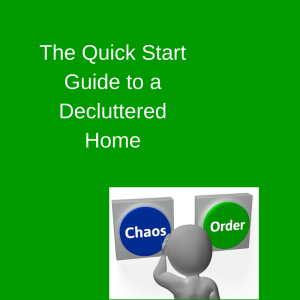 Parents, Silence your inner critics by Dianne Dempster
Parents, Silence your inner critics by Dianne Dempster
Gremlins – we all have them. What are they and why do they make or lives so miserable?
No, I’m not talking about our kids (though I’m sure we all have choice names for them at times.) Gremlins are those voices in our head that tell us, in one way or another, that we aren’t good enough. Some people refer to them as the inner-critic, or negative self-talk. No matter what you call them, they are troublesome at best, and for many people down-right paralyzing!
We tend to take on so much, and play so many roles. It’s hard to be a successful parent, partner, employee, boss, and friend. It’s even harder to play those roles well with a little voice in our heads that notices everything that doesn’t go as planned and tells us that things probably won’t work out anyway.
So where do these voices come from, and how do we get rid of them? (Or, do we?)
Our gremlins (yes we typically have more than one!) usually come from some real or perceived threat we experienced in the past. Perhaps you wanted to be accepted to a group as a teen and found you had to behave in a certain way for inclusion. Or maybe you experienced a very embarrassing situation. Your gremlins are “trying to” protect you from future rejection and discomfort. The threat seems so real that the voices tend to over-generalize. They get involved in aspects of our lives where they aren’t needed.
So what can you do to keep gremlins from getting in the way?
1) Notice it:
Pay attention to situations when the voices show up. Is it with particular people? Are you trying something new? Is it when you are being particularly brave? What threat is the voice trying to protect you from? What message is it sending?
2) Name it:
Call it what it is. Say to yourself, “that’s my perfectionist gremlin” or “that’s the voice in my head that doesn’t want me to be embarrassed.” You might even choose to name it. (Mine is named “Roz,” and Elaine’s is named “Prudence.”)
3) Own it:
Acknowledge that sometimes there is real value in having an intuitive voice making sure that you are safe. You might even take a moment to be grateful.
4) Choose:
Figure out if the voice is helping or hurting the current situation. Make a choice as to whether or not to listen. We have all had friends and family give us unsolicited or unwelcome advice that we have chosen to ignore. If the gremlin’s words are NOT helpful, don’t heed them. If you need to shut them up, try telling them, “ Thanks so much for sharing, but I’ve got this one covered!” Note: this may not make them go away, but typically can give us enough room to move forward and begin to regain momentum.
You may want to teach some of this “gremlin-talk” to your kids, too. Gremlins start creeping in at pretty young ages. Your kids are starting to create defenses that are valuable but can get in the way of forward progress and success. Remember these voices are a normal part of being human, and can definitely be helpful avoiding real threats. It’s just a matter of being aware enough to know when to listen, and when to tell them to “mind their own business.”
Return to ADD freeSources – Getting Rid of the Gremlins
Dianne Dempster – Article originally appeared on ImpactADHD.com and is reproduced with permission of ImpactADHD™
- For more about “Taming your Gremlins,” see the book by Rick Carson or visit his website.
“Image courtesy of saphatthachat/FreeDigitalPhoto.net”
Follow ADHD – ADD’s board Parents – Take care of yourself on Pinterest.
Follow ADHD – ADD freeSourcees’ board What’s getting in your way? Psychological help. on Pinterest.





